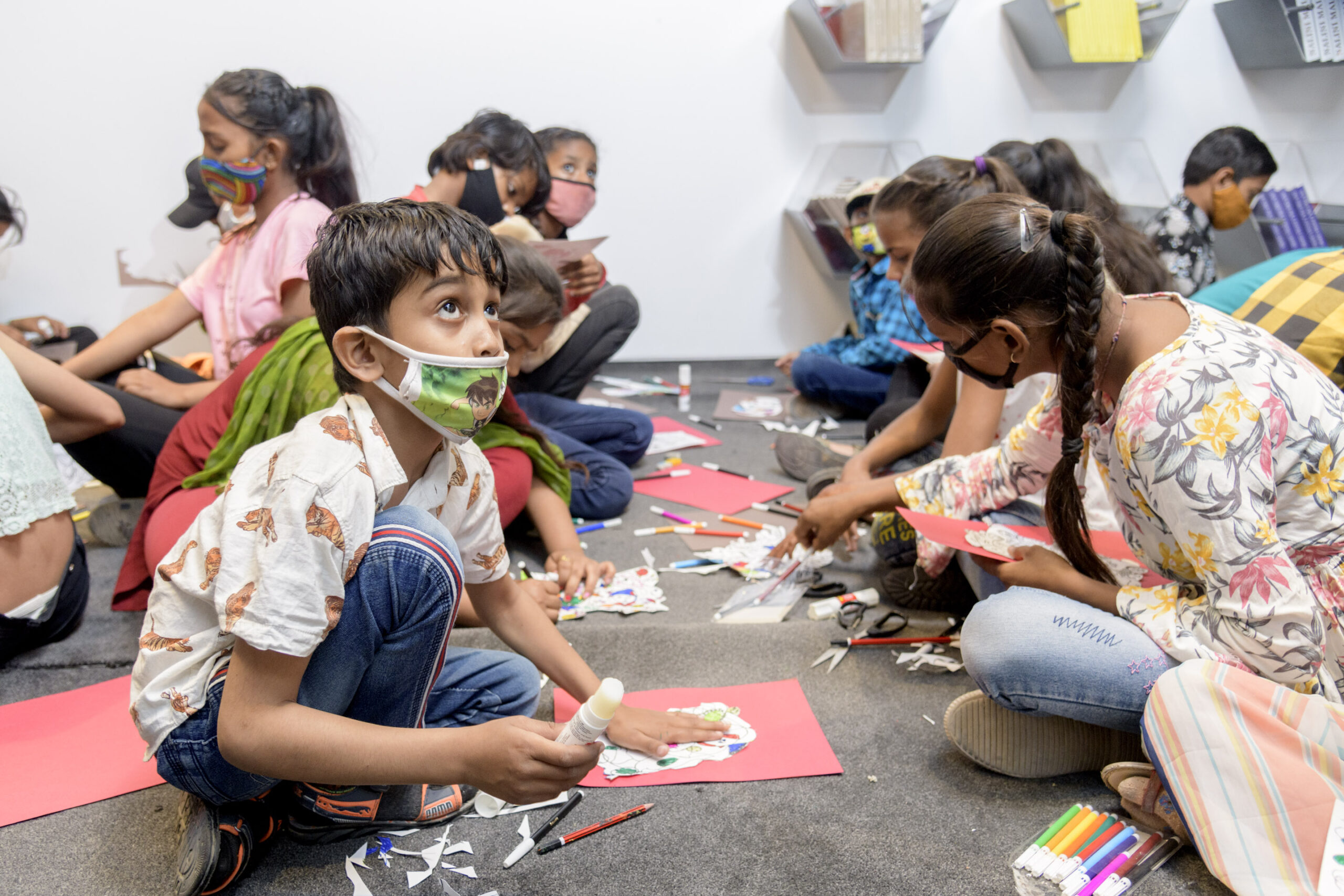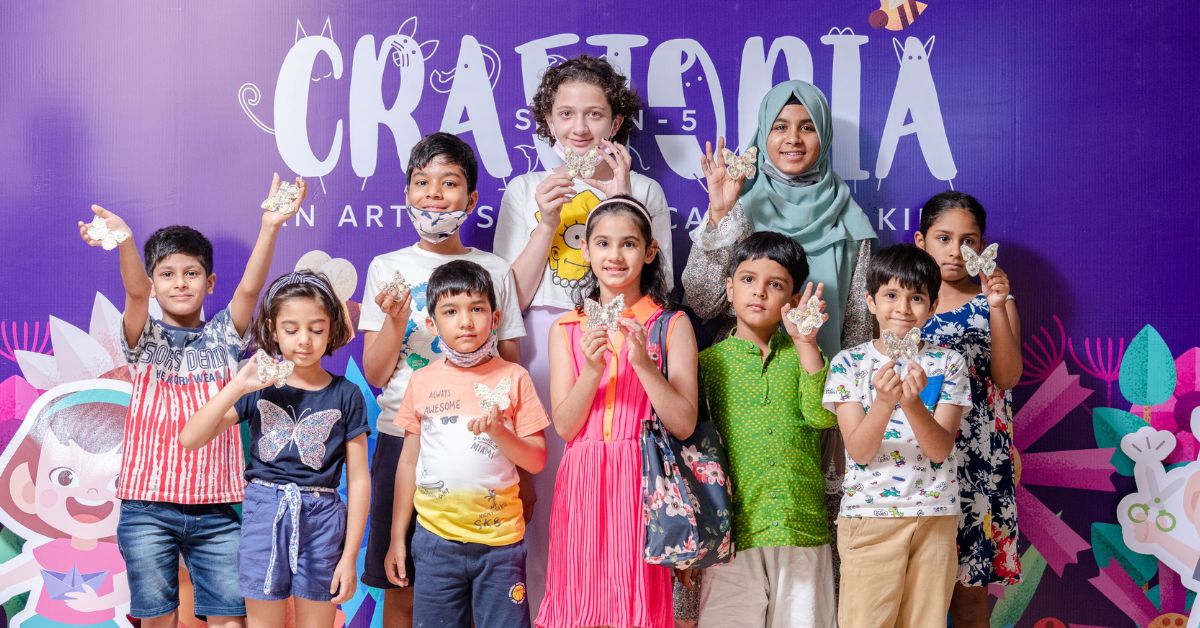This article has been sponsored by Kiran Nadar Museum of Art
‘Art is as natural as sunshine and as vital as nourishment,’ is what Maryann F Kohl, an educationalist and publisher once said.
Creative outlets, which include theater, dance, music and arts form a rather integral part of a child’s growing up years. With more and more schools now understanding the importance of an art curriculum, school going children are being exposed to various kinds of art.
At the Kiran Nadar Museum of Art (KNMA), based in Delhi/NCR, the constant endeavour has been to help educators connect students with art. The special educators at the museum create engaging content for art workshops that focus on ground-breaking learning through art.
Speaking to The Better India, Somya Sahni, Manager, Education and Outreach Program at KNMA says, “Students from schools, colleges and NGOs come in large groups to attend these stimulating workshops throughout the year. These workshops not only limit themselves to students but in the past few years have also attracted many young adults, senior citizens and individuals with special needs.”
Emphasising the need to expose children to an art education she says, “Art isn’t just about enhancing a few factors but helps in promoting an overall growth in an individual. We believe it is very important for children to be exposed to such creativity and find ways for them to retain it.”
1. Helps sharpen academic skills:

“There are various studies that have shown that children who spend an hour or more on art each day tend to perform better in academics as well. It promotes wholesome growth in the child,” she says. Indulging in art also helps children develop an out-of-the-box thinking streak.
2. Improves critical thinking:
Critical thinking enables children to think independently and reflect on the problem before them. An important skill set for the 21st century, exposure to art helps children fine tune this. The desire to sift through information and make informed decisions comes from critical thinking.
According to an article in Arts Academy in the Woods, art education, in particular, encourages students to observe the world from many different angles. Most art is very complex and consists of layers of meanings. It takes time to find, examine, and consider these many layers.
It’s this very process of observation and study that teaches students of the arts to more intensely observe and analyse the world. And it gives them the skills that build the foundation of critical thinking.
3. Helps decision making:
According to a report in the New York Daily News, art helps develop decision-making. The act of exploring and trying new ideas develops a child’s mind as a critical thinker and problem solver as they consider and make choices. These experiences in creating art carry over into other areas.
4. Creative approach to issues:
“Being involved in creating art opens up a child’s imagination. When one has multiple thoughts running in the mind, one who is involved in art is able to solve problems in a better manner. It helps evaluate, observe and think critically while solving a problem on hand,” adds Somya.
5. Visual learning:
It is important for children to learn and understand beyond text and numbers. Art provides that platform for children to see the world through a different lens. Dr Kerry Freedman, Head of Art and Design Education at Northern Illinois University says, “Children need to know more about the world than just what they can learn through text and numbers. Art education teaches students how to interpret, criticise, and use visual information, and how to make choices based on it.”
6. Colour as a means to feel calm:
Somya says, “Colour plays an important part in our life. Each colour reflects a certain emotion. One is able to understand what is going through in the mind of a child by asking them to randomly paint at times. It is a reflection of one’s thoughts. Colour is often used as therapy and can have a very calming effect on children.”
At KNMA, with programmes on art appreciation and various hands-on art classes one can expect children to undergo an immersive experience. Currently, one can enroll children in the Art of Storytelling programme for children aged between 5 to 14 years at a nominal fee of Rs 300. The six-day programme will be conducted from 21st to 26th June 2022 at both Delhi and Noida space.
One can enroll by logging on the official website here and filing out the application form.
Sources:
Encouraging art in a child develops an adult creative thinker by Colleen Miller
How Art Education Fosters Critical Thinking and Why It Matters
The Importance of Art in Child Development By Grace Hwang Lynch
(Edited by Vinayak Hegde)
If you found our stories insightful, informative, or even just enjoyable, we invite you to consider making a voluntary payment to support the work we do at The Better India. Your contribution helps us continue producing quality content that educates, inspires, and drives positive change.
Choose one of the payment options below for your contribution-
By paying for the stories you value, you directly contribute to sustaining our efforts focused on making a difference in the world. Together, let's ensure that impactful stories continue to be told and shared, enriching lives and communities alike.
Thank you for your support. Here are some frequently asked questions you might find helpful to know why you are contributing?

